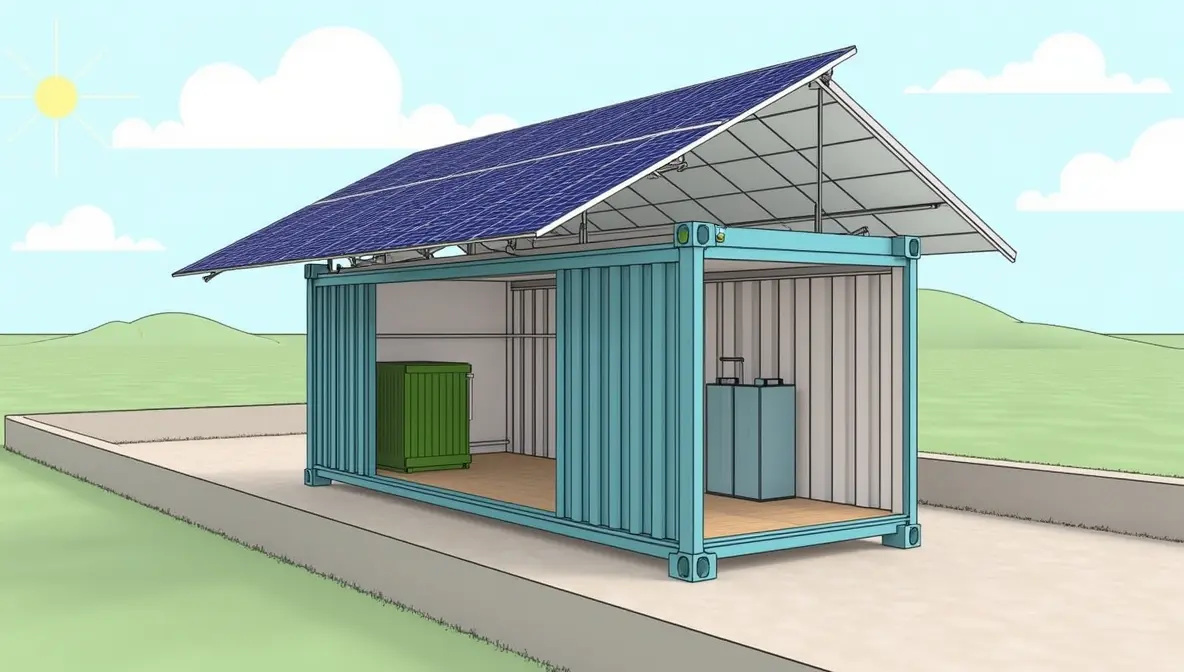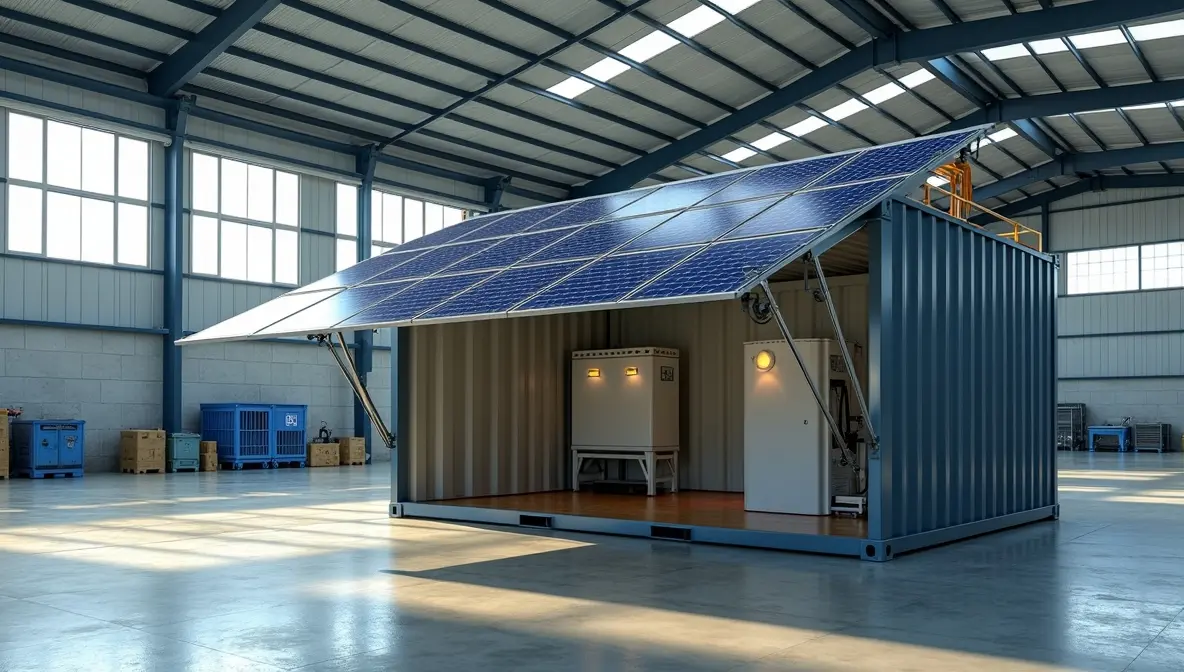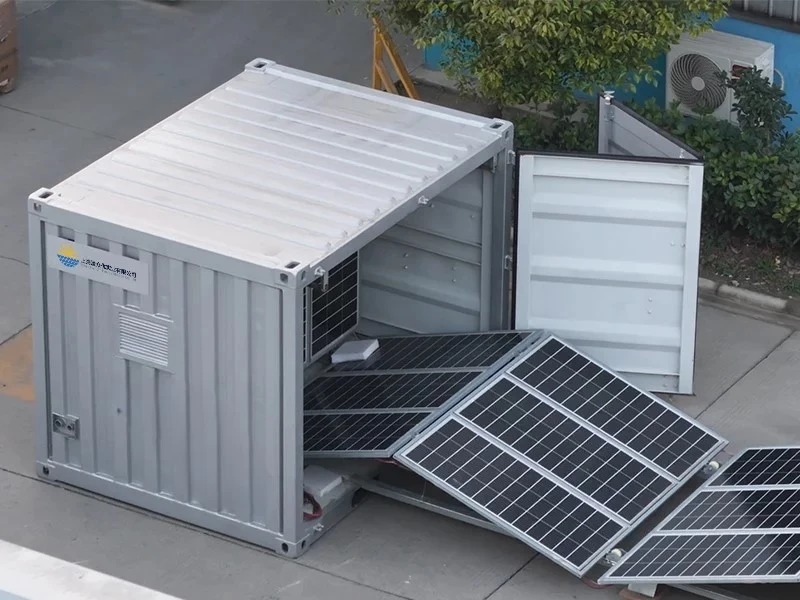Can I run power to a shipping container? Absolutely – with modern off-grid systems, it's surprisingly straightforward. Shipping containers are often used as remote offices, workshops or data shelters on construction sites, farms, and emergency zones. When the grid is hundreds of feet away (or non-existent), a self-contained power solution is ideal. For instance, specialized units like the LZY-MSC1 Sliding Mobile Solar Container pack fold-out solar panels, inverters and batteries into a 20-foot steel box. Deployed in under an hour, these can deliver anywhere from 20–200 kW of PV and include 100–500 kWh of battery storage. In short, you can indeed run power to a container – either by extending a line from the grid or by turning the container itself into a mini power station using solar panels.

Why power a shipping container?
There are many reasons to supply electricity to a container, especially in off-grid settings. Common scenarios include:
- Remote work sites:Construction sites, mining camps and telecom towers often use containers as mobile offices or equipment rooms. These locations typically lack nearby utility service, so bringing on-site power (for lights, tools and computers) is crucial.
- Events and emergencies:Outdoor concerts, festivals, exhibitions and disaster-relief camps rely on portable power. A solar-powered container can run lighting, sound systems, medical equipment or communications gear without waiting for grid hookups.
- Off-grid living and clinics:Even homes and clinics have been built from shipping containers. Case studies show a 40-foot container home powered entirely by solar and batteries – enough to run all appliances including heating and cooling.
- Temporary or tactical projects:Military field camps, film crews, agricultural projects and pop-up shops often set up in containers. Equipping one with photovoltaic panels and batteries provides a quick-deploy power hub.
- Cost and reliability:Over time, solar reduces fuel and maintenance costs compared to generators. For example, mining operations report cutting diesel use by more than half by switching to containerized solar power.
In summary, any situation needing reliable, portable power – particularly where the grid is impractical – is a perfect candidate for a solar-powered container solution.
What are my options?

To power a container, you have three main choices:
- Grid connection:If a utility line is accessible, you can trench cable and feed the container’s electrical panel. This gives steady AC power, but long runs require heavy-gauge cable to prevent voltage drop, and utility permits are often needed.
- Generator:A diesel or gas generator can run the container. Simply plug in a heavy-duty extension cord or use a transfer switch. Generators provide full power on demand, but they need fuel, make noise, and emit exhaust. (Many container-solar kits even allow an optional genset as backup.)
- Solar PV + Battery:The clean off-grid choice. Mount high-efficiency solar panels on the container roof or adjacent racks and charge a battery bank to supply power. For example, BoxPower’s 20-foot SolarContainer can hold 4–60 kW of PV on its roof – enough for heavy-duty loads. The panels feed an inverter/battery inside. This setup runs silently with no fuel cost. As one DIY installer noted, buying a commercial plug-and-play solar generator system was expensive but “damn if it doesn’t make it easy!”.
Solar power is generally the preferred off-grid solution. Panels “collect sunlight and turn it into electricity, giving you a renewable and sustainable power source”. If your utility offers net metering, any excess daytime energy can be fed back to the grid for credit. Otherwise, simply add enough battery storage to bank surplus power for night use. In effect, the container becomes a mobile microgrid tailored to your load requirements.
How do I run power to a shipping container?
Powering a container involves the same careful steps as any building plus some solar-specific setup. The key steps are:
- Load assessment:List all lights, outlets and equipment to be powered. Calculate the total wattage and daily energy (kWh) needed. This determines the size of the solar array and battery bank.
- Mount the solar panels: Install PV modules on the container roof or an adjacent frame. Solar panels on container roofstypically require custom mounting hardware. As one installer explained, “we have to fabricate the racking… basically it’s a custom welding project”. Build sturdy racks that hold the panels at the optimal tilt (roughly your latitude angle) for maximum sun exposure.
- Wire panels to the inverter:Run the DC output from the array (using appropriately sized outdoor-rated cable) to a charge controller and/or inverter inside the container. Include a DC disconnect and surge protection between the panels and the equipment for safety.
- Install the battery bank:Place batteries (deep-cycle lead-acid or lithium) in a secure, ventilated area inside the container. Connect them to the inverter so that surplus solar power is stored. (Optional: configure a generator input so you can charge the batteries via genset on long cloudy periods.)
- Distribute AC power:Wire the inverter’s AC output to the container’s breaker panel (similar to a small home panel). Install outlets, switches and lights just as in a building. Use GFCI outlets in any wet or outdoor areas to meet code.
- Grounding: Bond the container’s metal frame and all rack/panel frames to a grounding rod. Proper grounding ensures that the entire structure stays at a safe potential in case of faults.
- Commission and test: Double-check all connections. Have a licensed electrician inspect and sign off on the work. Then power up the system gradually, testing each component (breaker, GFCI, inverter). Many systems support remote monitoring to verify generation and battery status.
Following these steps will give you a fully functional power system. In practice, companies make it easy: LZY Container reports their MSC1 unit can be deployed by four people in under an hour. Throughout the process, always follow safety protocols. For example, one installation guide stresses that you must “install ground-fault circuit interrupters (GFCIs) to prevent electrical shocks” and ensure the system meets all electrical codes.
Product Spotlight: LZY-MSC1 Sliding Mobile Solar Container

Figure: An off-grid solar container deploying high-efficiency PV panels.
The LZY-MSC1 is a prime example of a containerized solar power station. It’s essentially a standard 20-ft steel container fitted with fold-out photovoltaic arrays, inverters and batteries. When deployed, the container slides panels out on all sides to form a large solar field, yielding 20–200 kWp of solar generation. Up to 500 kWh of lithium battery storage underneath keeps the power flowing day and night. Despite this capacity, LZY says a crew of four can deploy the MSC1 in roughly an hour, making it ideal for rapid-deployment power in remote field projects.
Safety and Regulatory Considerations
A container installation must meet all the usual building and electrical codes. Key points include:
- Permits and inspections:Obtain necessary permits. In the U.S., this means following the National Electrical Code (NEC) for wiring and solar PV (other countries have similar codes). Your installation will be inspected just like any permanent structure.
- Ground-fault protection:Install GFCI outlets and breakers where required. As one guide warns, “install GFCIs to ensure your system can handle the power needs” safely – critical if the container is in a damp environment.
- Professional installation:Always have a qualified electrician connect the main power. Improper DIY wiring can cause shorts or shocks. The same guide advises hiring a licensed professional to ensure the job is done safely.
- Equipment ratings:Use UL-listed (or local-equivalent) inverters, breakers, wires and MC4 connectors. Ensure all components are rated for outdoor/industrial use.
- Weatherproofing:Seal all roof penetrations (rack mounts, cable entries) to keep rain out. Make sure the array and container structure are rated for your wind and snow loads.
- Battery safety:House batteries in a ventilated compartment, and consider fire suppression for large lithium banks. (BoxPower’s design even includes pre-installed fire extinguishers or suppression in their battery container.)
- Monitoring and maintenance:Use a monitoring system to watch performance and get alerts. Periodically inspect the panels and wiring.
In practice, power and wiring in the container follow standard safety rules: ground all metal, use appropriate breakers and conduit, and adhere to the code. One industry summary concludes that whether you’re on-grid or off-grid, you should use GFCIs, meet your power load safely, and have the installation certified by a pro. Observing these guidelines will keep the container’s electrical system safe and reliable.
Tip: If operating in extreme climates, insulate or climate-control the container – batteries and electronics prefer moderate temperatures. Also, size your solar array about 20–30% larger than the bare minimum. The extra capacity ensures that even on cloudy days you generate enough power to stay off the generator.
Figure: Container-based off-grid solar setup with fold-out panels (an LZY-MSC1 unit).
